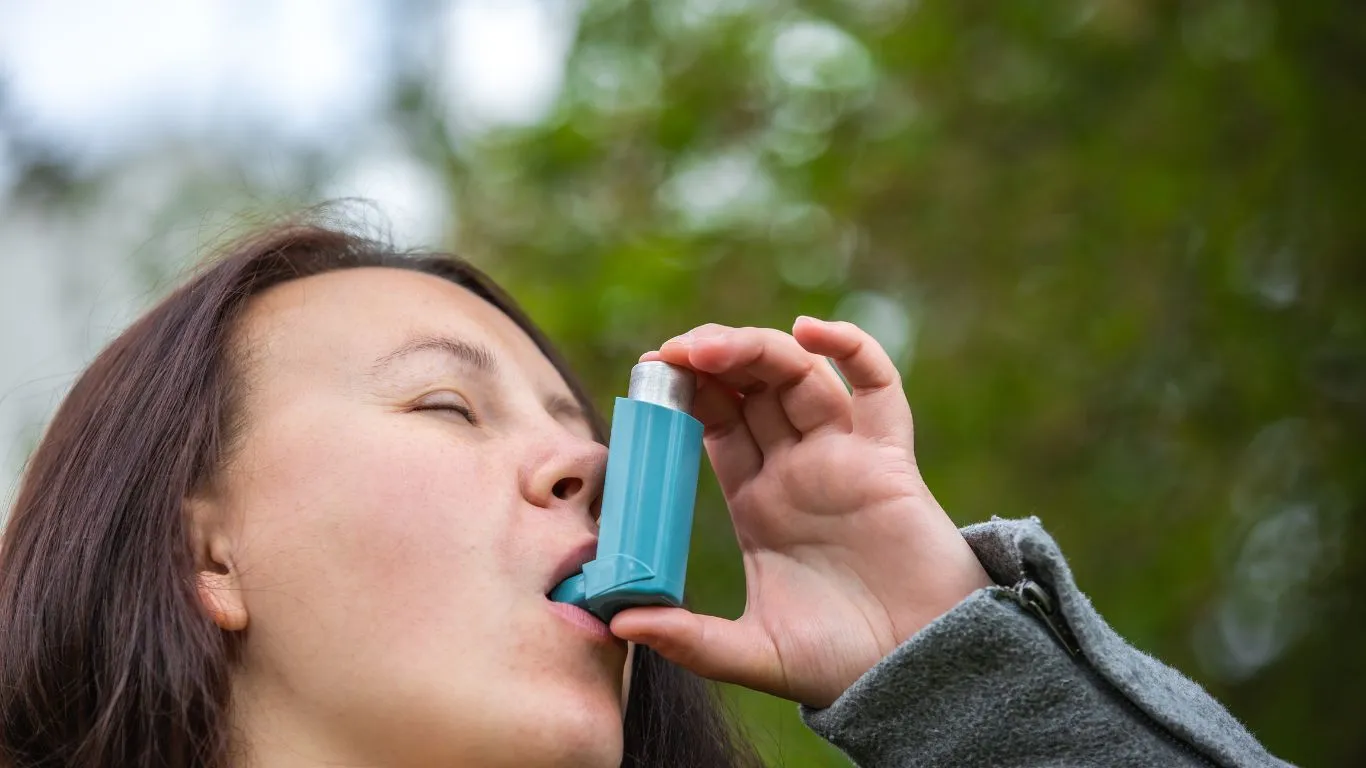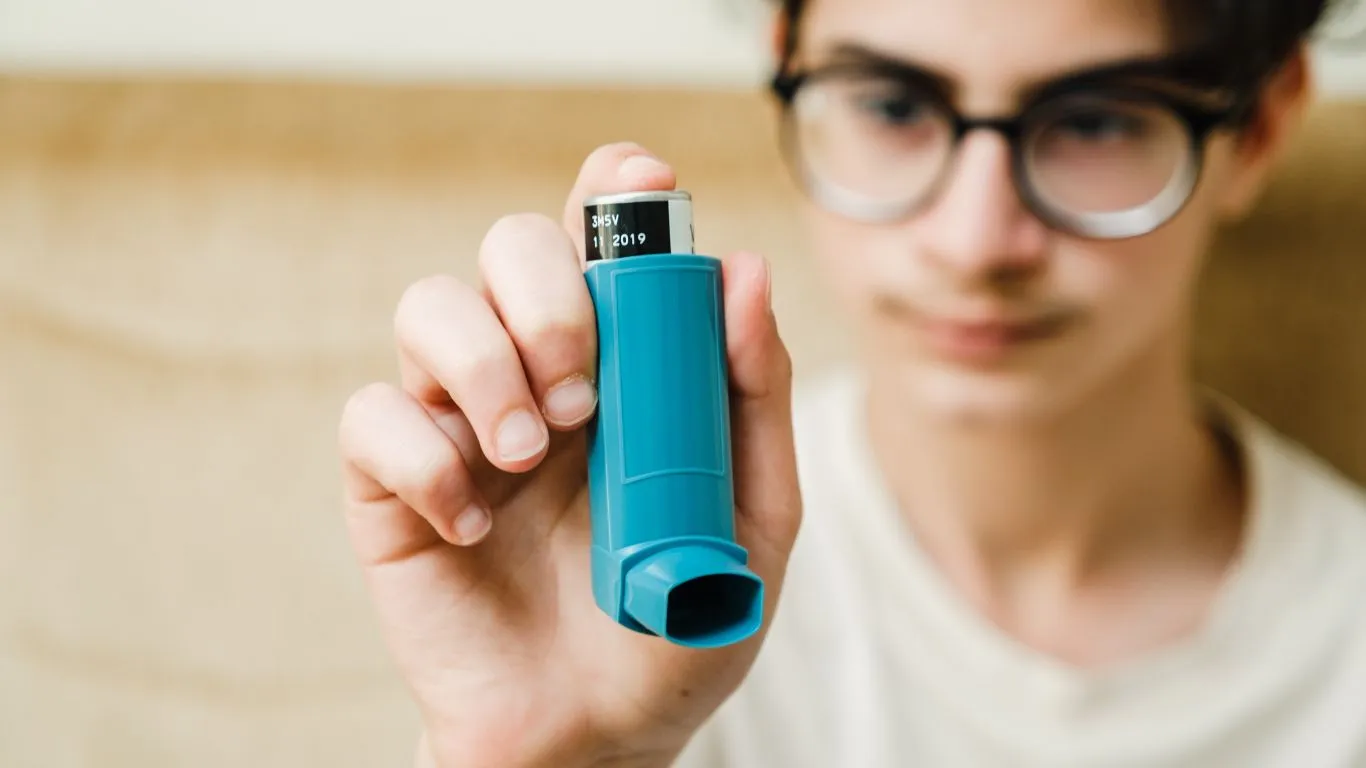Why the Best Air Quality Monitors for Asthma Are Game-Changers
Let me tell you something as someone who’s spent years as a pulmonary nurse practitioner — managing asthma isn’t just about the right meds or emergency plans. It’s also about creating the healthiest environment possible. And that starts with air quality. If you’re looking for the best air quality monitors for asthma, you’re already a step ahead. I’ve seen firsthand how poor air quality can turn a stable asthma case into a frequent flier in the ER. So trust me, investing in a solid air monitor isn’t just a tech gadget — it can be a literal breath of fresh air.
Why Air Quality Matters So Much When You Have Asthma

Living with asthma is like walking on a tightrope. One minute you’re fine, and the next, something in the air flips the switch. I’ve had patients whose triggers ranged from dust and mold to wildfire smoke — things you can’t always see, but your lungs definitely notice. That’s where air quality monitors come into play. They track the invisible culprits, giving you real-time insights so you can take action before things escalate.
Honestly, I’ve seen the impact in my own home. My niece, who stays with me often, has asthma. We started using an indoor air monitor after a particularly rough allergy season, and it was eye-opening. I didn’t realize how much our cooking habits or even scented candles were affecting her breathing until the monitor clued me in. And once we adjusted? Night and day difference.
What to Look for in the Best Air Quality Monitors for Asthma

Choosing the right monitor isn’t just about flashy features. You want something reliable, accurate, and actually useful in everyday life. Here’s what I always recommend keeping an eye out for:
1. Real-Time Tracking of Key Pollutants
Make sure the device measures PM2.5 (fine particulate matter), VOC levels (volatile organic compounds), and CO2. These are major asthma triggers. Some devices even measure formaldehyde and carbon monoxide, which is a big plus.
2. App Integration and Alerts
Let’s be real — none of us are going to hover over a little screen all day. The best devices push alerts to your phone, making it easier to take action. I’ve gotten warnings right before my niece had flare-ups. One time, it was because someone nearby lit up a bonfire and we hadn’t closed the windows yet. The monitor caught it before we did.
3. Historical Data and Trends
This is gold. Being able to look back and connect the dots between asthma symptoms and air quality patterns can help you tweak your home setup or even your daily routine. Maybe it’s worse when the windows are open, or maybe your furnace needs a new filter.
4. Portability
If you’re always on the go, a compact monitor can come in handy. Some of my patients toss a portable one into their kid’s backpack or purse, especially when they’re headed to school or practice in areas with poor outdoor air ratings.
Top Benefits of Using an Air Monitor in Asthma Management

- Prevention over reaction: You can tackle air issues before symptoms hit.
- Peace of mind: You’ll sleep better knowing you’re breathing safe air — and that your loved ones are, too.
- Better conversations with your doctor: Armed with air quality data, your provider can make smarter decisions about your asthma action plan.
- Empowered decision-making: You’ll know when it’s time to run an air purifier, close the windows, or even skip a morning jog.
At the end of the day, it’s about control. Living with asthma doesn’t mean living in fear. The right air quality monitor becomes your early warning system — your invisible shield. And as someone who’s been in the trenches of asthma care, I can’t emphasize enough how game-changing that can be.
How I Help Patients Choose the Right Air Monitor

One of the questions I get asked a lot in clinic is, “Which one should I buy?” And honestly, the answer depends on your lifestyle, your budget, and how serious the asthma is. I’ve helped parents shop for their kids, seniors who live alone, even fitness buffs who want to know if it’s safe to exercise outdoors. Every situation’s different, so I usually walk folks through a few questions:
- Are you using it indoors, outdoors, or both? Indoor monitors are great for homes, especially bedrooms and kitchens. But if you spend a lot of time outside or travel, a portable model might be a better fit.
- Do you want smart home integration? Some people love linking their air monitor to Alexa or Google Home. It’s not essential, but for tech-savvy families, it adds convenience.
- How much detail do you really want? Some units give you a simple color-coded alert (green is good, red is bad), while others break down every compound. If you like digging into data, go with the latter.
My personal favorite right now? The Airthings View Plus. It’s not the cheapest option, but it offers in-depth readings for PM2.5, VOCs, CO2, and even radon. I’ve used it both at home and recommended it to patients with moderate to severe asthma, and the feedback has been overwhelmingly positive.
Breaking Down the Science in Simple Terms

I know a lot of this tech-talk can feel overwhelming, especially if you’re new to managing asthma or dealing with it in your child. So let’s simplify the science a bit. Here’s what some of the most common terms mean in real-life terms:
- PM2.5: These are teeny-tiny particles (like smoke, dust, or pollen) that get deep into your lungs. You don’t see them, but your body sure feels them.
- VOCs: Volatile organic compounds — sounds fancy, right? These come from cleaning products, paint, even perfumes. They irritate your airways and can set off a coughing fit or worse.
- CO2: Not just something from car exhaust. In homes, CO2 can build up if your ventilation is poor — think small rooms with closed windows.
- Humidity: Too much or too little humidity can be a problem. Dry air irritates the lungs, while high humidity can lead to mold growth.
Understanding these levels can really change the way you manage asthma. For instance, one of my patients kept having night-time flare-ups, and we finally traced it back to high VOC levels from a new carpet installation. Once they started using an air monitor, they picked up on the trend quickly and were able to swap out the problem rug.
Real Stories From My Patients and Family

Let me share a few quick stories that might sound familiar. One mom I work with has a six-year-old who was having frequent asthma attacks, sometimes even after school. She thought it was seasonal allergies — turned out, their daycare had poor air circulation and was using heavy cleaning sprays. A portable air quality monitor revealed PM2.5 spikes in the classroom, and after she shared the data with staff, they changed cleaning routines and added an air purifier. Attacks dropped almost overnight.
Another patient — a retired teacher who loves gardening — used a monitor to decide when it was safe to work outside. During wildfire season last year, the readings on her monitor literally saved her from an ER trip. She called me to say, “I stayed inside today, and I think that monitor might’ve saved me.” That hit home.
Even in my own home, we’ve made small but meaningful changes based on our monitor’s feedback — opening windows at the right time, using a HEPA air purifier more strategically, switching to low-VOC cleaning supplies. It’s like we finally had the missing piece of the puzzle.
How to Make the Most of Your Air Monitor
Buying the right monitor is just the beginning. You also need to use it consistently and respond to what it’s telling you. Here’s what I tell folks:
- Keep it somewhere central: For indoor units, the living room or bedroom is ideal. Don’t stash it in a corner.
- Track patterns: Log readings during different times of day or after certain activities. It’ll help you spot trends.
- Pair it with action: If levels spike, run the air purifier, open or close windows, or change your location if you’re mobile.
- Share your data: Bring your air monitor trends to your pulmonologist or asthma specialist. It’s like having another diagnostic tool in your back pocket.
We’re all trying to breathe a little easier, and when it comes to asthma, knowledge really is power. These monitors don’t just sit on a shelf collecting dust — they become part of your daily routine. A sidekick in your asthma toolkit. And honestly, they’re worth every penny when you think about the peace of mind they bring.
Using Air Monitors to Support Asthma Care Plans

So you’ve got the monitor, you’re watching the numbers — now what? This is the part where things really come together. One of the most underrated perks of using the best air quality monitors for asthma is how they can strengthen your asthma care plan. When I’m working with patients, especially those with moderate to severe asthma, I encourage them to bring in their monitor data just like they would a symptom diary.
We use that information to tailor medication timing, adjust environmental control strategies, and even predict bad flare-up days. It’s especially helpful for parents managing asthma in young kids who can’t always describe what they’re feeling. I’ve had families come in with screenshots from their air monitor apps, and it gives me a crystal-clear view of what their home environment is really like — which is way more helpful than guessing.
Let Your Air Monitor Be the Missing Link
Think of it like this: you wouldn’t drive a car without a dashboard, right? You need to know how fast you’re going, how much gas is left, if the engine’s running hot. Air monitors are your asthma dashboard. They fill in the blanks between what your lungs are feeling and what’s actually floating around in your air.
Once, a patient of mine — a teen athlete — kept having asthma symptoms only during morning workouts. We looked at the monitor data and realized that pollen and PM2.5 levels spiked right around 6 a.m. After adjusting her run to late afternoon, the symptoms vanished. That’s the kind of info no inhaler or medication label is going to give you.
Recommended Brands That Stand Out in Real-World Use

I’ve worked with quite a few air quality monitors over the years — both personally and professionally — and some brands consistently get high marks from me and my patients. Here are a few that stand out:
- Airthings View Plus: Offers advanced tracking of PM2.5, VOCs, CO2, radon, and even humidity. Great app interface, reliable readings, and looks sleek in any room.
- IQAir AirVisual Pro: Especially helpful for comparing indoor and outdoor air quality side by side. It’s a favorite among parents of asthmatic kids in high-pollution areas.
- Awair Element: Stylish, compact, and solid for tracking VOCs and humidity. Not as advanced as others, but fantastic for starter users.
- Temtop M10: Budget-friendly and portable. It gives you quick access to PM2.5, formaldehyde, and VOC levels — without needing a smartphone app.
Each of these devices has its strengths, but more importantly, they’ve proven effective for real people managing real asthma symptoms. I’ve seen families reduce ER visits, kids sleep through the night for the first time in weeks, and older adults breathe easier just by making informed choices based on the data these monitors provide.
Tips to Keep in Mind When Using Your Monitor Long-Term
Buying an air monitor is a great step, but like any tool, its real power comes from consistent use. Over time, you’ll start to spot patterns you never noticed before — like how cooking certain foods affects indoor air, or how pollen levels change hour by hour.
Here are a few pro tips I’ve picked up:
- Don’t ignore the alerts. If your device pings you about poor air quality, take action. Close windows, turn on a HEPA filter, or hold off on vacuuming.
- Stay on top of maintenance. Calibrate the device if needed, and change air purifier filters on schedule. Clean sensors gently to ensure accuracy.
- Involve the whole family. Make checking air quality a habit — kind of like checking the weather before heading out. Kids actually enjoy “reading” the monitor and guessing what triggered a spike.
Remember, asthma management is never one-size-fits-all. But air quality data adds that personalized edge — it’s your home’s way of telling you what’s working and what’s not. And in healthcare, especially when you’re trying to reduce triggers, that’s huge.
References
Disclaimer
This article is based on professional experience as a pulmonary nurse practitioner and is intended for informational purposes only. It is not a substitute for medical advice, diagnosis, or treatment. Always consult with your healthcare provider before making decisions regarding asthma management or purchasing health-related devices.

Bianca Nala is a compassionate Nurse Practitioner with a strong background in primary and respiratory care. As a health writer for Healthusias.com, she combines her clinical expertise with a talent for clear, relatable storytelling to help readers better understand their health. Bianca focuses on topics like asthma, COPD, chronic cough, and overall lung health, aiming to simplify complex medical topics without losing accuracy. Whether she’s treating patients or writing articles, Bianca is driven by a single goal: making quality healthcare knowledge accessible to everyone.





